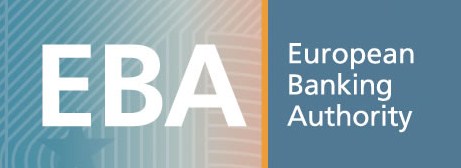EBA supervises ICT risk management within financial entities (II)

As we discussed in the previous post, the European Banking Authority (EBA) in its report Guidelines on ICT Risk Assessment under the Supervisory Review and Evaluation process, includes a section describing how to inspect technology risk management within the framework of global operational risk management.
This assessment will be obtained from different sources, including activities, reports and results of the entity's risk management, risk self-evaluations and ICT controls, periodic reports on ICT risk, specific information on incidents, and results of internal and external audits related to ICT.
EBA defines its ICT Risk Assessment method including some controls matching other information security frameworks, but adapting to the financial institutions distinctive features. For which it establishes 4 stages:
1.- Review of the entity's ICT risk profile
It obtains a first approach of the impact produced by the ICT risk on the financial system availability and continuity, analyzing in a general way aspects such as IT infrastructure unavailability , dependence on the Internet, ICT complexity or its obsolete nature, external ICT services hiring , facilities location, and socio-political aspects.
2.- Review of critical ICT systems and services
It is about making an ICT systems and services inventory essential for the organization. Which must meet at least one of the following conditions:
• Support the main business operations (ATMs, online banking, mobile banking)
• Support government processes and essential corporate functions (risk management, treasury management).
• Be subject to special legal or regulatory requirements with availability, resilience, confidentiality, or security requirements
• Process or store confidential or sensitive data whose unauthorized access could affect the entity reputation , financial results or business strength.
• Provide basic and vital functionalities for the entity operation
3.- Material ICT risks Identification for critical ICT systems and services
Taking into account the revisions of the ICT risk profile and the critical ICT systems and services, each entity must identify its own risks, taking into account the financial impact produced by the revenue loss , legal and repair costs, business availability and continuity risk (number of customers or branches and potentially affected employees), the impact on the organization’s reputation, fines for non-compliance with regulations, and the impact on the organization’s strategic plans.
Once the risks have been identified, a risk treatment plan must be developed and managed by monitoring a set of controls to mitigate these risks.
4.- Control assessment to mitigate material ICT risks
The competent authorities will review the way in which the entity identifies, follows, evaluates and mitigates the material risks identified in the previous step; for which they will evaluate the following control set:
|
ICT risk controls |
|
|
ICT Risk management Policy |
Policy statement and approval. ICT Risk management system |
|
Organization management and supervision framework |
Roles, responsibilities, resources and internal audits. |
|
Internal Audit coverage and results |
Periodic audit execution and results monitoring |
|
ICT availability and continuity
|
Critical processes and systems identification . Business continuity plan. Incident management procedure. Capacity management |
|
ICT Security |
Information security management system. Technical vulnerabilities management . Internal and external assets and services inventory. Awareness and training. Access control. Network controls. Independent security audits |
|
Change Management |
Processes documented. Tasks segregation. Realistic testing environments. Systems life cycle management. Source code control access. System and application security audits. Information leakage prevention |
|
Data integrity |
Functions and responsibilities. Data model. Application use authorization. Integrity exceptions management |
|
ICT Outsourcing |
Strategy. Impact assessment. Risk and service level monitoring. Service management resources |
To complete the assessment process, the competent authority reflects the opinion formed about the entity's ICT risk in a results report. If the ICT risk is considered to be material, it can be scored in the report as a subcategory of operational risk according to the following scale:

